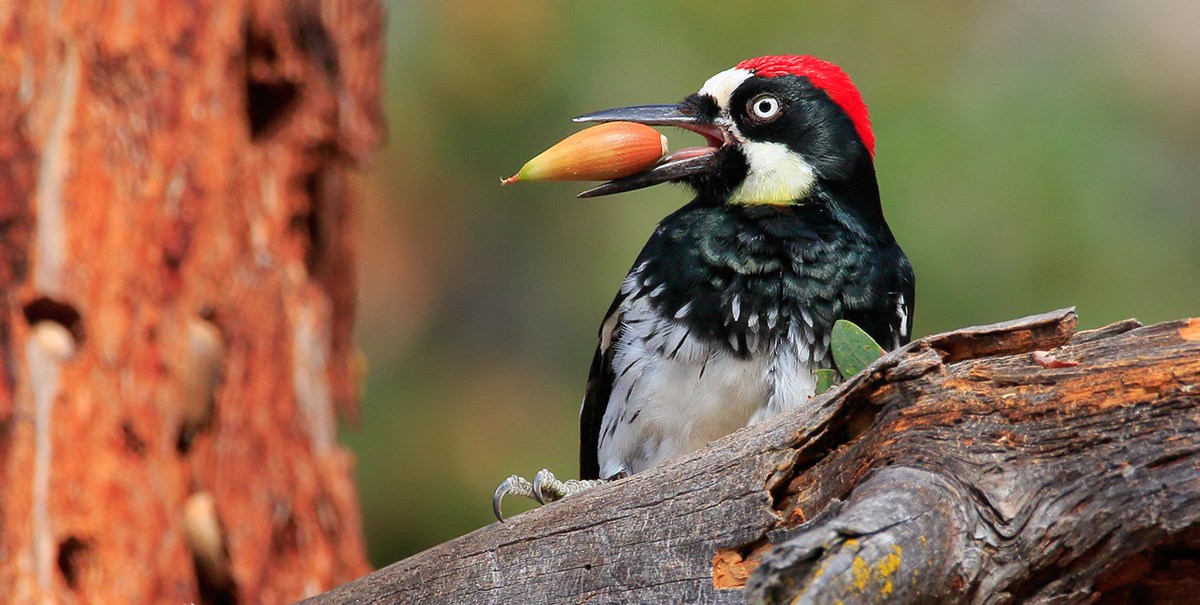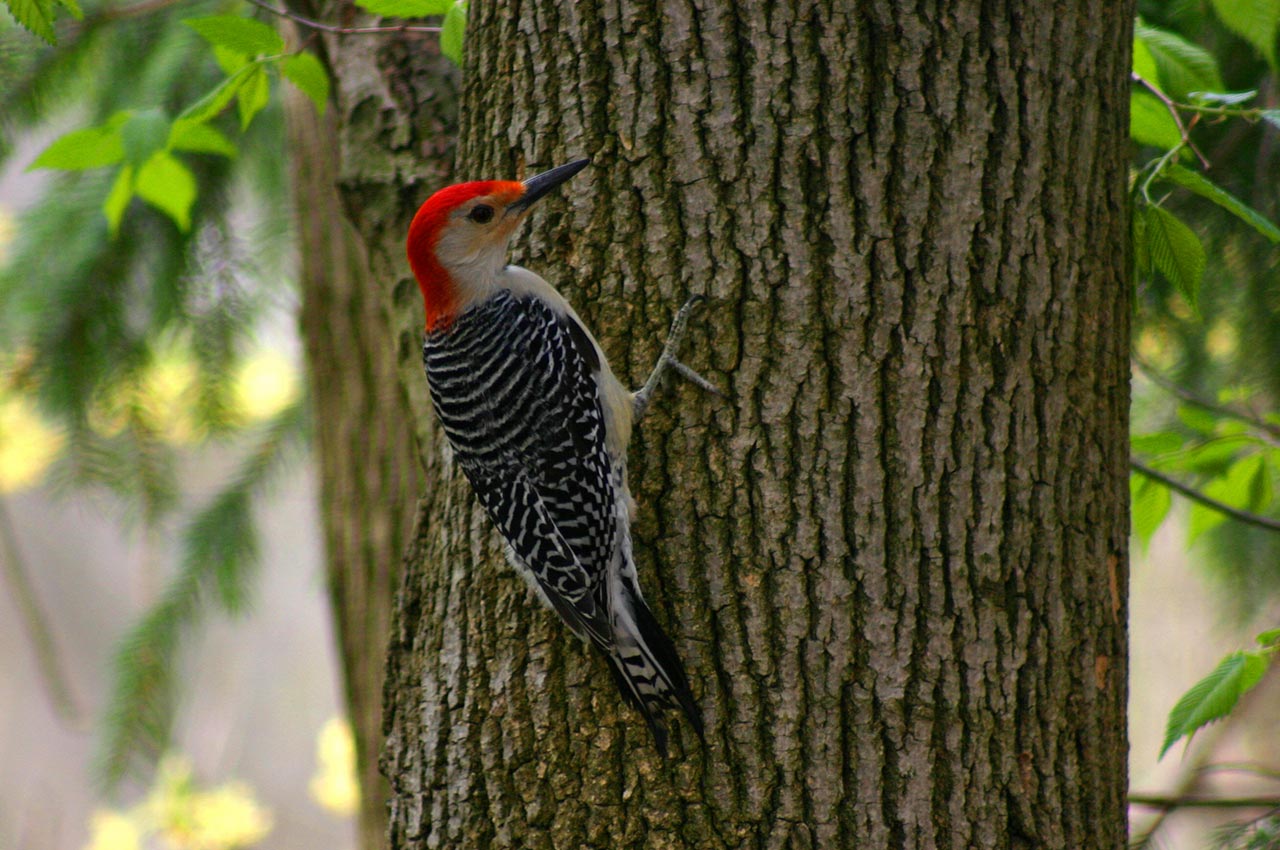Woodpeckers in Florida: Identification Tips and Environment Preferences
Woodpeckers in Florida: Identification Tips and Environment Preferences
Blog Article
Woodpeckers: A Comprehensive Guide to Comprehending These One-of-a-kind Birds
Woodpeckers, with their distinct behaviors and physical characteristics, have long astounded the curiosity of ornithologists and nature fanatics alike. From their balanced drumming echoing with the timbers to their impressive adjustments for scaling tree trunks effortlessly, these birds provide an interesting research study in avian biology. What absolutely sets woodpeckers apart is not just their striking appearance but also their crucial duty in maintaining the delicate equilibrium of communities. As we check out the intricate anatomy, diverse species, and environmental value of woodpeckers, a much deeper admiration for these distinct birds and the mysteries they hold unravels.

Woodpeckers' Drumming Actions
Woodpeckers show a rhythmic and specific drumming actions that serves different vital functions in their lives. This habits is mostly associated with interaction, region defense, and foraging. The unique drumming sound is created by the fast pecking of their beaks versus hard surface areas such as tree trunks, branches, or perhaps steel things.
Interaction is an important element of woodpecker habits, and drumming plays a significant duty in this procedure. Woodpeckers utilize drumming to develop their presence, draw in companions, and maintain contact with their partners and children. The regularity, strength, and period of drumming series communicate specific messages to other woodpeckers in the location.
Along with interaction, woodpeckers utilize drumming actions for region defense. Woodpeckers in Florida. The loud and repetitive drumming acts as an advising to potential burglars, signifying that the area is currently declared. By developing their region through drumming, woodpeckers reduce the possibility of conflicts over beneficial sources such as food and nesting websites
Additionally, woodpeckers also employ drumming as a foraging technique. The rhythmic pecking assists them find insects concealing below the bark of trees by producing vibrations that interrupt the target's concealment. This habits showcases the adaptability and resourcefulness of woodpeckers in utilizing their drumming skills for multiple essential functions.
Special Adjustments for Tree Climbing
Having actually understood the art of drumming to communicate, safeguard region, and forage, woodpeckers have evolved one-of-a-kind adjustments that facilitate their remarkable climbing capabilities in their arboreal environments. One crucial adaptation is their specific feet. Woodpeckers have zygodactyl feet, with 2 toes pointing onward and two toes aiming backward. This arrangement offers a strong grasp on the vertical surfaces of trees, permitting them to cling easily while foraging for bugs or drumming. Furthermore, woodpeckers possess rigid tail plumes that work as a prop to sustain their bodies as they climb. These tail feathers provide stability and balance, allowing woodpeckers to maneuver up tree trunks with precision and agility.
Moreover, woodpeckers have powerful neck muscular tissues and a distinct skull structure that aid in their climbing up capabilities. Their strong neck muscle mass enable them to quickly eat tree bark without experiencing whiplash, while their thick skull and little brain serve as shock absorbers, safeguarding them from the influence of repeated drumming. These adaptations collectively make it possible for woodpeckers to navigate the upright world of trees with effectiveness and elegance.

Role of Woodpeckers in Environments
By foraging for bugs under the bark of trees, woodpeckers help manage bug populations, preventing outbreaks that might hurt the total wellness of the woodland. Additionally, woodpeckers create tooth cavities in trees that serve as important nesting sites for a range of other bird types, promoting biodiversity a fantastic read within the environment.
Additionally, the drumming and vocalizations of woodpeckers play a vital role in interaction and region facility. These audios not just offer to draw in friends yet additionally assist specify boundaries between various woodpecker territories, decreasing conflicts and promoting a harmonious coexistence within the woodland community. In general, the presence of woodpeckers in forest Check Out Your URL communities highlights their value as keystone species, influencing the characteristics and working of these environments in complex ways.
Anatomy: Specialized Beaks and Feet
In the intricate web of forest environments, the specialized beaks and feet of woodpeckers are essential adaptations that allow them to accomplish their essential environmental functions. Woodpeckers have distinct anatomical features that are especially created to help them in their foraging and nesting habits.
The most distinct feature of woodpeckers is their solid, chisel-shaped beaks. These beaks are perfectly adapted for exploration into timber to uncover insects, larvae, and sap surprise below the bark of trees. The strong muscle mass and tough structure of their beaks allow woodpeckers to peck at a rate of as much as 20 times per secondly without see this page creating damages to their skulls.
Furthermore, woodpeckers have specialized feet that help in their acrobatic climbing up capabilities. Their feet have two toes directing onward and 2 toes pointing backward, giving a solid grasp on upright surfaces (Woodpeckers in Florida). This distinct foot setup, in addition to stiff tail plumes that serve as an encouraging prop, enables woodpeckers to hold on to tree trunks and branches effortlessly while they browse for food or dig deep into nesting cavities
Woodpecker Species Diversity
What factors contribute to the impressive variety of woodpecker types across various environments and regions? Woodpeckers are a diverse group of birds found throughout different ecosystems worldwide, with over 200 recognized varieties displaying adaptations to different atmospheres. One key element driving this diversity is the schedule of suitable habitats. Woodpeckers have actually advanced to populate a range of settings, from woodlands and forests to grasslands and deserts, each providing one-of-a-kind difficulties that have actually affected the evolution of unique woodpecker varieties.
Another contributing variable to woodpecker types variety is their specialized feeding actions. Different varieties have evolved to make use of different food sources, such as insects, tree sap, fruits, and nuts, bring about the growth of particular adjustments in beak form, dimension, and stamina. These adaptations allow woodpeckers to forage efficiently in their respective habitats, minimizing competition amongst species and advertising niche differentiation. In addition, geographical isolation and historical aspects have played a role in shaping the distribution and diversity of woodpecker species, causing the vast range of specialized adaptations seen in these fascinating birds.

Final Thought
Finally, woodpeckers are interesting birds that exhibit special drumming behavior, specialized adaptations for tree climbing, and play important functions in ecological communities. Their composition, including specialized beaks and feet, permits them to prosper in their atmosphere. With a diverse variety of woodpecker species found worldwide, these birds are essential for maintaining the health and balance of woodlands and woodlands. Recognizing and valuing the complexities of woodpeckers can give important insights into the all-natural globe.
Report this page